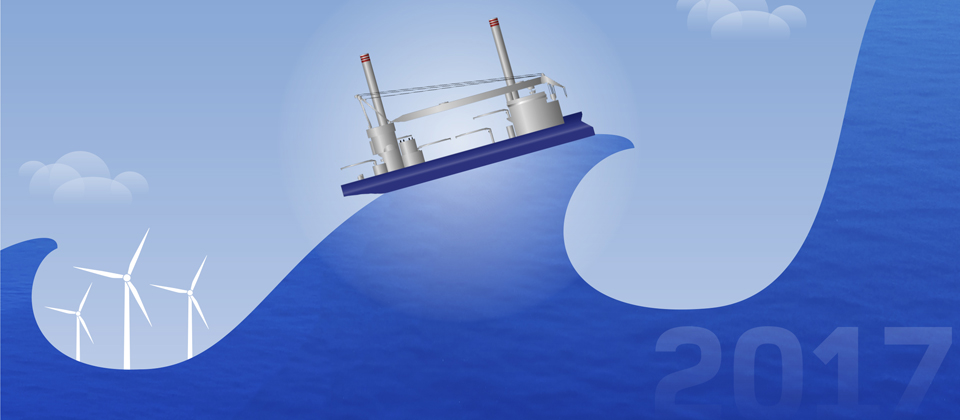
By Jens Frederik Hansen, CEO, A2SEA A/S
Adjusted market expectations mean the next 2-3 years will present a new set of challenges for offshore wind. Jens Frederik Hansen examines the likely impact on the construction supply chain.
Today, our industry faces uncertainties perhaps as great as any we have seen before. It’s not that the future doesn’t look positive – in fact, market prospects are every bit as strong. But we are entering a challenging period that is unlikely to end until late 2016 at best. The situation has positive and negative implications for practically all companies in the offshore wind energy business, but I’d like to draw attention to the likely effects on the construction side of things, in particular.
Arguably, the offshore wind energy industry has been somewhat sheltered from the economic downturn of recent times – thanks, largely, to the nature of long-term infrastructure investments. Now, it seems, we’re about to go through an unprecedented loss of momentum where industry players throughout the supply chain will need to tighten their belts and look for opportunities for optimisation across the board.

Jens Frederik Hansen, CEO, A2SEA A/S
During the second half of 2014 and throughout 2015, it seems there will be a certain amount of over-capacity where installation vessels are concerned. A flow of newbuild investments, to a large extent made on the basis of the now faltering German market, is pressuring installation providers with new levels of competitive behaviour. Instead of arriving to fulfil growth predictions that have now faded, this over-capacity is about to make itself felt in all corners of our industry.
By 2017–18, the market is projected to boom heavily again, with postponed German projects and newly approved UK projects rapidly filling the capacity gaps. The growth path at that point may, in fact, be such that we can’t be sure how the market will react. It is, however, likely that fundamental changes will have taken place among installation providers as they deal with the shortage of contracts.
Companies will adjust to the challenges of this situation in different ways. Some putting everything on hold (frightened by the risks of new delays and postponements), others keeping their eyes firmly on preparing and strengthening for the promised upturn.
There is, of course, a risk that some installation resources will depart for other industries – oil and gas being the most obvious choice. Some companies could be expected to encounter financial difficulties leading, on the one hand, to closures and thus lost supply chain capabilities and, on the other, to industry consolidation. The strongest players in the market, of which A2SEA is one, may even acquire some of these surplus resources and skilled personnel, making them even stronger when it comes to meeting the demands of 2017 onward.
Despite developments like these, it’s not all doom and gloom over the next few years for offshore wind. Competitive pressure tends to drive costs down, not driven by reducing margins alone, but fuelled by innovation in tools and technologies, too. Thinking out of the box will be key when it comes to cost control and reduction, making a significant contribution to lowering the cost of energy and helping to make the entire future of wind more viable.
Like this post? Subscribe now and get notified about new content!
